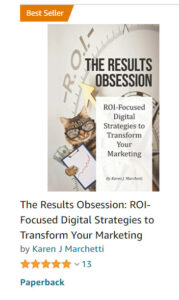How can you evaluate your copywriting? Use our 4-Point Test
You’ve drafted your website, email, print ad, or direct mail copy using the Six Steps in the Sales Process for Effective Copywriting. And you’ve crafted an effective headline using the 6 Tests of Effective Headlines.
What about the actual words? Here’s a 4-Point Test to evaluate your body copy . . .
Test #1: Read your copy out loud
When you listen to the way people speak, most of us talk in short, simple sentences. That’s exactly the way your copy should be written. Why? The simpler you can make your copy to get through, the more likely you are to keep your audience reading.
Writing the way people speak is also friendlier. When we speak, we tend to use contractions (isn’t, aren’t, it’s, etc.). We also may start sentences with “And” or “But.” Your grade-school grammar teacher may say that’s not grammatically correct. And if you have a PR or journalism background (or your copywriter does), you may also not be used to writing that way. But it’s the most effective way to write advertising copy. Starting sentences with “And” or “But” helps copy to flow naturally, making it easy to get through.
So read your website copy, email copy, direct mail copy, and print ad copy out loud. Think as you’re reading, “Is this what I would actually say face-to-face?” If not, change it.
Notice any sentences that are too long to get through in one breath. Break those sentences up, by creating two sentences, or using em dashes – or ellipses . . . or a comma.
Test #2: Get the “you” in there
You want to use more “you” and “your” in your copy, rather than “I”, “we”, “us”, “our,” your company name, or your product name. The reason? Your prospects don’t care about you or your company. They only care about “what’s in it for me?” So review your writing for too much of “your company talking to itself” by too much “I-we-us-our.” Talk directly to your reader.
Test #3: Specifics sell!
The more specific you can be within your copy, the stronger your message. Generalities – that don’t immediately paint a picture in the prospect’s mind (like “quality”, “value”, “innovation”) – aren’t memorable, are boring to read, and won’t differentiate you from the competition. (Typically, if you’re using generalities in your copy, it could mean you haven’t done enough competitive research to know what your unique benefits are.)
Use an uneven number to add credibility — and memorability — to your statement.
”Removes 53% more metals from your water”
is much stronger than
“Removes more metals from your water”
The specificity of 53% looks like a result from a study and looks believable. And an uneven number like 53% is actually more memorable.
Test #4: Every word has a purpose
You may have heard some say “no one reads anymore” (and maybe you believe it).
Yet, purchases are made every day as a result of emails, direct mail, print ads, and website copy. The truth is no one reads boring copy — usually filled with generalities that don’t tell the reader anything. (And no one reads copy that looks hard to get through — so break up your paragraphs with specific subheads, which can also help your SEO efforts.)
Search out any words in your copy that don’t need to be there. You want to “edit to be lean.” If you can remove a word or phrase (sometimes an entire paragraph) and not change the strength of your sell, those words don’t need to be there (and leaving them in is likely depressing your response).
“We make creative products designed by professionals to meet the specific needs of clients”
Huh? So What??? This entire sentence didn’t tell the prospect anything at all.
Just about any company could say this — and that makes it a useless statement to include in your copy. This copy is so general, you could remove the entire sentence with no problem (and doing so would likely improve response).
Make every word as strong as it can be — use action verbs and words that paint a strong picture in the prospect’s mind.
Use these 4 simple steps to evaluate your copywriting, and you’ll likely improve engagement and response.
Think your copy could use some polishing? Contact us for a review.
This is part 1 of a 3-part series on improving your copy. Part 2 is 6 Tests to Evaluate Your Headlines. Part 3 is Does Your Website Copy Really Sell?
 Excerpted from our new BEST SELLER, “The Results Obsession: ROI-Focused Digital Strategies to Transform Your Marketing” now available on Amazon!
Excerpted from our new BEST SELLER, “The Results Obsession: ROI-Focused Digital Strategies to Transform Your Marketing” now available on Amazon!
Learn more about The Results Obsession and see the Table of Contents including:
- 3 chapters on Planning, Crafting, and Editing Copy
- 2 chapters on Website Content and Copy
- 2 chapters on Planning and Crafting Email Copy
- Plus, get Chapter excerpts — 6 Results Obsession Strategies and 3 Skills, 10 Marketing Math formulas
- Download the infographic — Diagnose Opportunities to Improve Results






[…] Good copy is written the way people speak. Most of us usually speak in simple language. And usually in relatively short sentences. […]
[…] Previous Next […]
[…] If you missed part 1 of this 3-part copywriting series: 4 Test of Website Copy that Sells […]